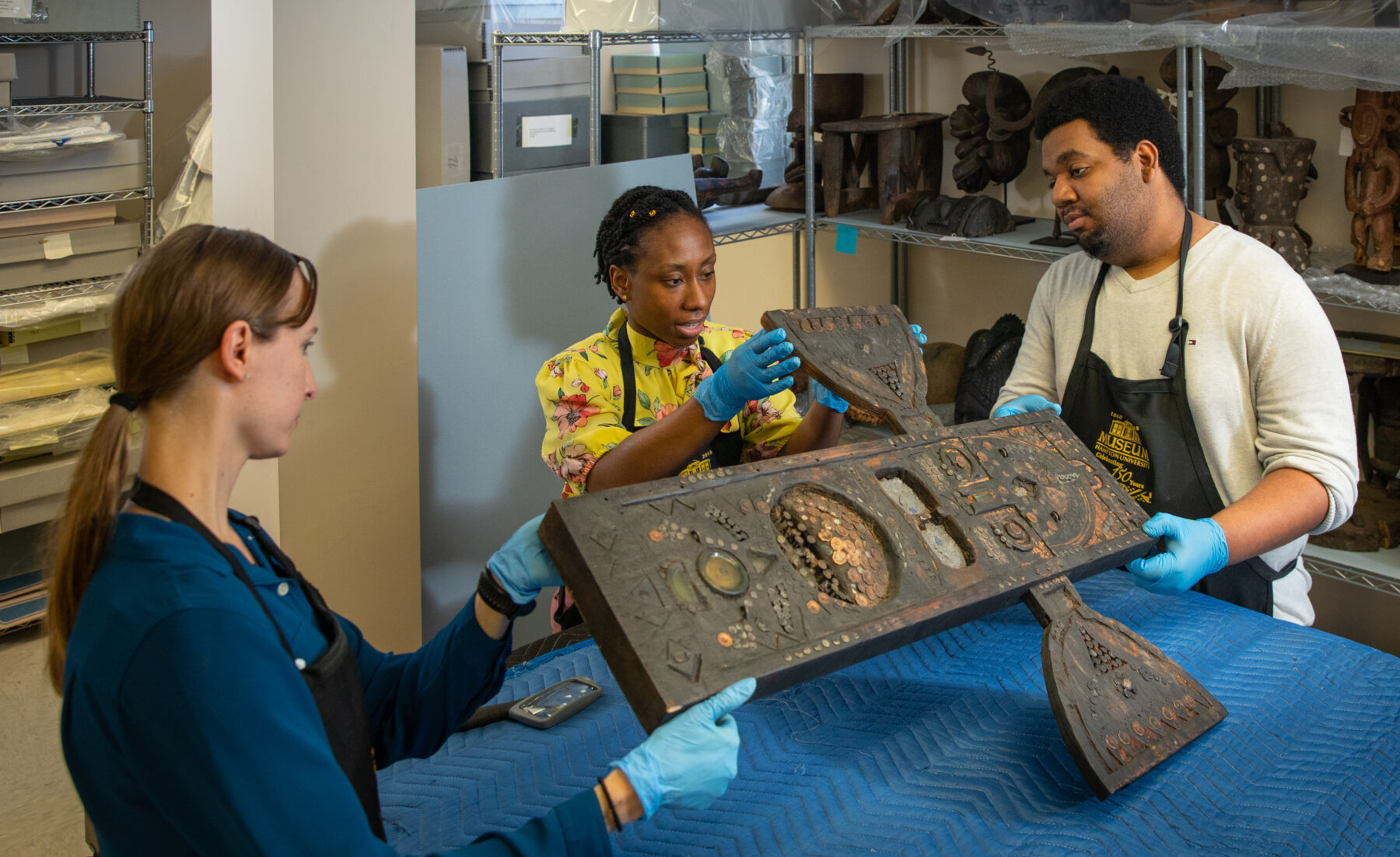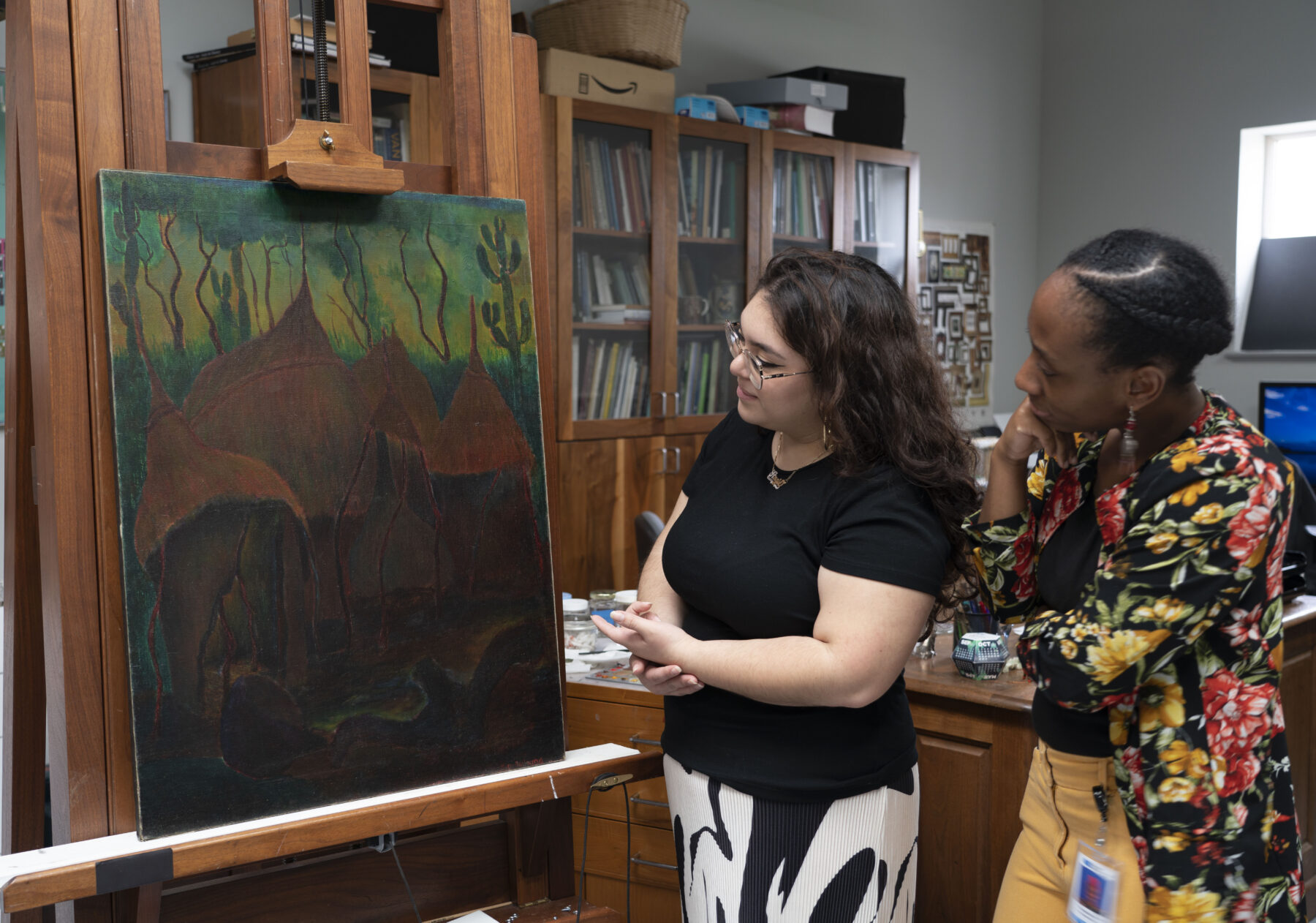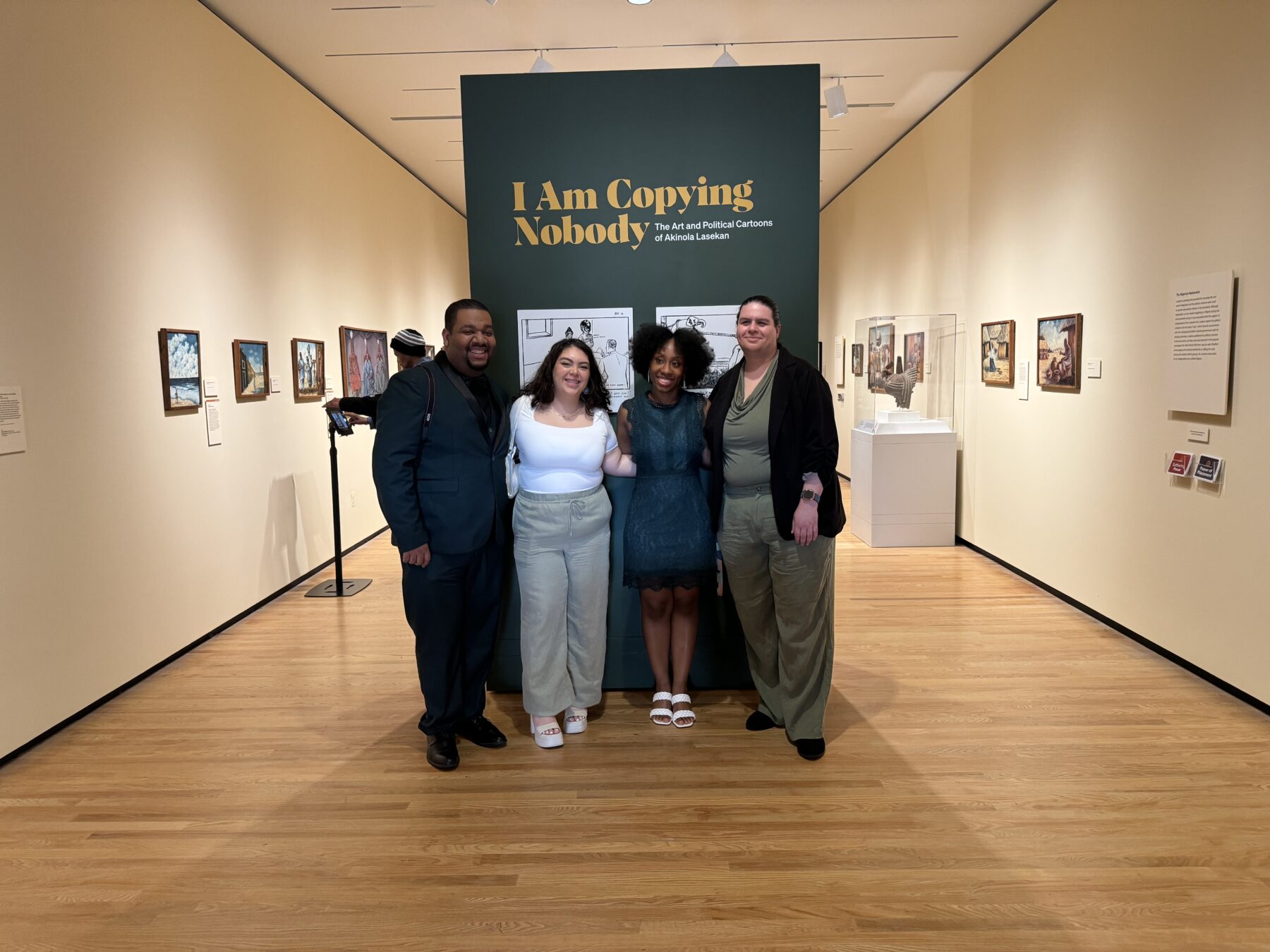Outreach Programs with The Links, Incorporated and the Osher Lifelong Learning Institute

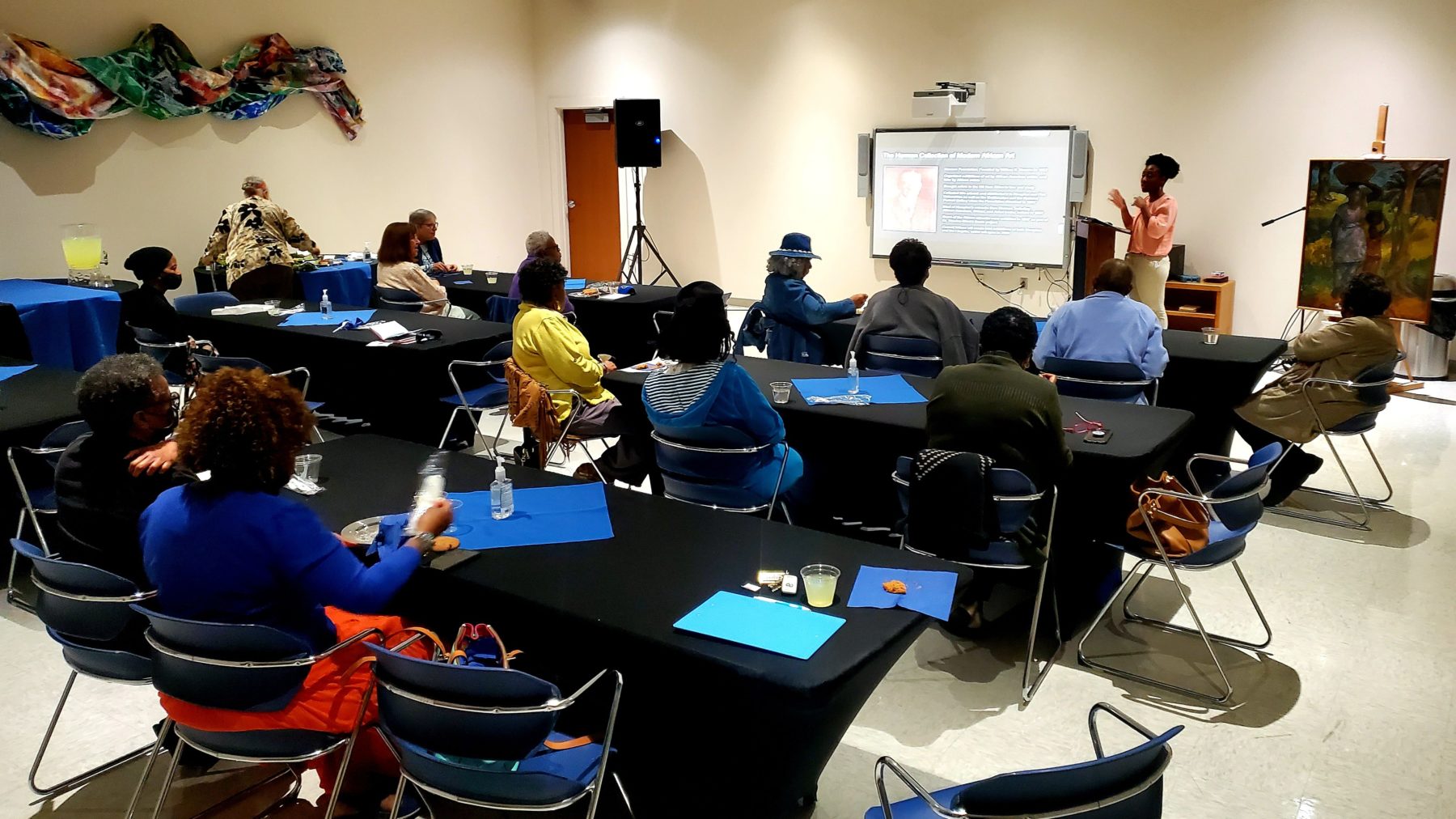
Tashae presenting the history of the Harmon Collection to the group.
For the past eight months, we have been working on documenting the Harmon Foundation Modern African Art collection. Tashae has been working on creating an inventory, or list of all the artwork in the collection, while Elizabeth has been creating a survey of the collection which consists of condition reports for each artwork. This has been an exciting undertaking because we have had the opportunity to view more than 500 paintings, works on paper, ceramics, and sculptures. This blog is just one of the outlets we will use to share information on our findings and on the project itself. Another one of our goals is to present outreach programs to the public, both virtually and in-person. So far, we have had the opportunity to participate in two such programs, partnering with The Links, Incorporated and the Osher Lifelong Learning Institute.
To learn more about the Harmon Foundation and how they started collecting Modern African Art, please visit our post, Origins of The Harmon Foundation and Collection.
The Links, Incorporated Virtual Program
Our first outreach event took place in February, and involved being part of a program orchestrated by Hampton University Museum (HUM) Director, Dr. Vanessa Thaxton-Ward, and Valerie Cooper, Corporate Art Consultant, Fine Art Appraiser, and Eastern Area Arts Facet Co-Chair and Museum Liaison for the Links, Incorporated. This “international, not-for-profit corporation [is] committed to enriching, sustaining and ensuring the culture and economic survival of African Americans and other persons of African ancestry” and has worked closely with HUM over the years. Since secondary and collegiate students were invited to this national and international presentation, Dr. Thaxton-Ward felt that it would be an excellent opportunity to showcase the work that we have been doing and the expertise of Kenlontate Turner, Hampton University Museum’s Curator of Collections. With the help of Valerie and Kenlontae, we created a virtual presentation that addressed three major questions: What is a conservator? What is a curator? What is Modern African Art?
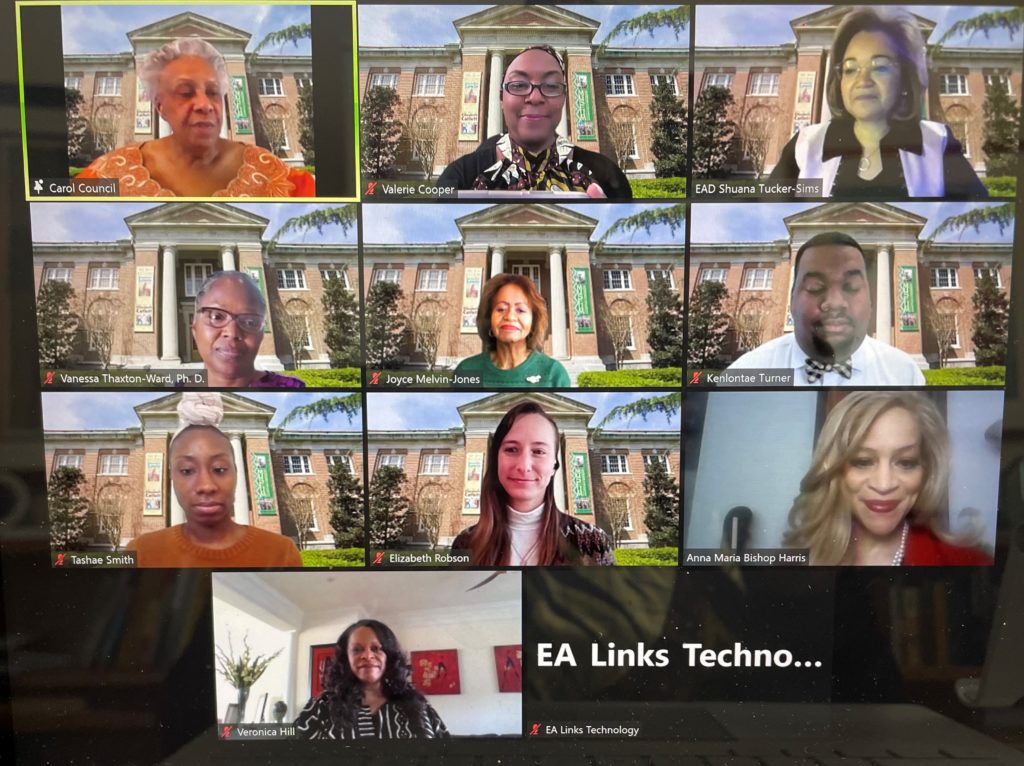
Because this virtual program occurred only four months into the project, we did not yet have a great deal of information to present regarding the artworks in HUM’s Modern African Art Collection. Despite this, we took the opportunity to present the details of the Mellon Foundation grant that supports our work, and what our roles have and will entail as conservation and curatorial fellows. Dr. Thaxton-Ward introduced us briefly and then the majority of our presentation addressed the three questions stated above. We each had ten minutes to present our individual sections. Although the time was limited, this allowed us to focus on the main ideas and introduce tailored information to support them. Elizabeth started by sharing the definition of a conservator, while including other professions that art conservators get confused with, such as “conservationists”, which are people who work on environmental conservation. In her presentation, Tashae included the definition of a curator, as well as different institutions where curators may be found besides art museums, such as art galleries, history museums, and botanical gardens. Lastly, Kenlontae talked about Modern African Art and its connection to African-American Art.
Overall, the program went very well. From the feedback we received, those who joined the webinar enjoyed the presentations and the information on curation, conservation, and Modern African Art. For us, this outreach program provided a great platform to introduce ourselves and our roles as the conservation and curatorial fellows for this project. We appreciated this wonderful opportunity to share HUM’s collection and speak about the generous grant that was received from the Mellon Foundation in partnership with The Chrysler Museum of Art.
Osher Lifelong Learning Presentation
Our presentation to the Osher Lifelong Learning group was entitled “The Art Doctor is In, and the Curator Too!” and was set up and moderated by Crystal Johnson, Associate Curator and Director of Membership and Community Programs. Sixteen members joined this in-person program at Hampton University Museum, which was our first in-person outreach event since beginning the project. We each talked a bit about our backgrounds and current work, and then introduced the Mellon grant project. We also discussed diversity statistics about the museum field based on the Art Museum Staff Demographic Surveys of 2015 and 2018. These surveys showed that men still occupy a greater percentage of the leadership positions than other roles. Additionally, though there have been recent incremental increases in racial diversity, conservation in particular is behind in this trend, likely due to slower turnover rates.
For the next part of the presentation, Elizabeth discussed what art conservation is, showing several examples of treatments including a news clip about the preservation of the Tuskegee Dioramas. After describing the basic principles and values of conservators, Elizabeth began her “examination” of a painting, comparing it to a doctor’s visit. Both doctors and conservators look closely, ask questions, use various tools to aid their examination, and learn as much about the history of the “patient” as possible. The first painting discussed was in very good health, so Elizabeth also showed pictures of the kinds of damage, like lifting paint, that conservators look for which may require treatment. She then provided examples of lifting paint which she had recently fixed, to ensure that the artwork is “healthy” and ready for display!
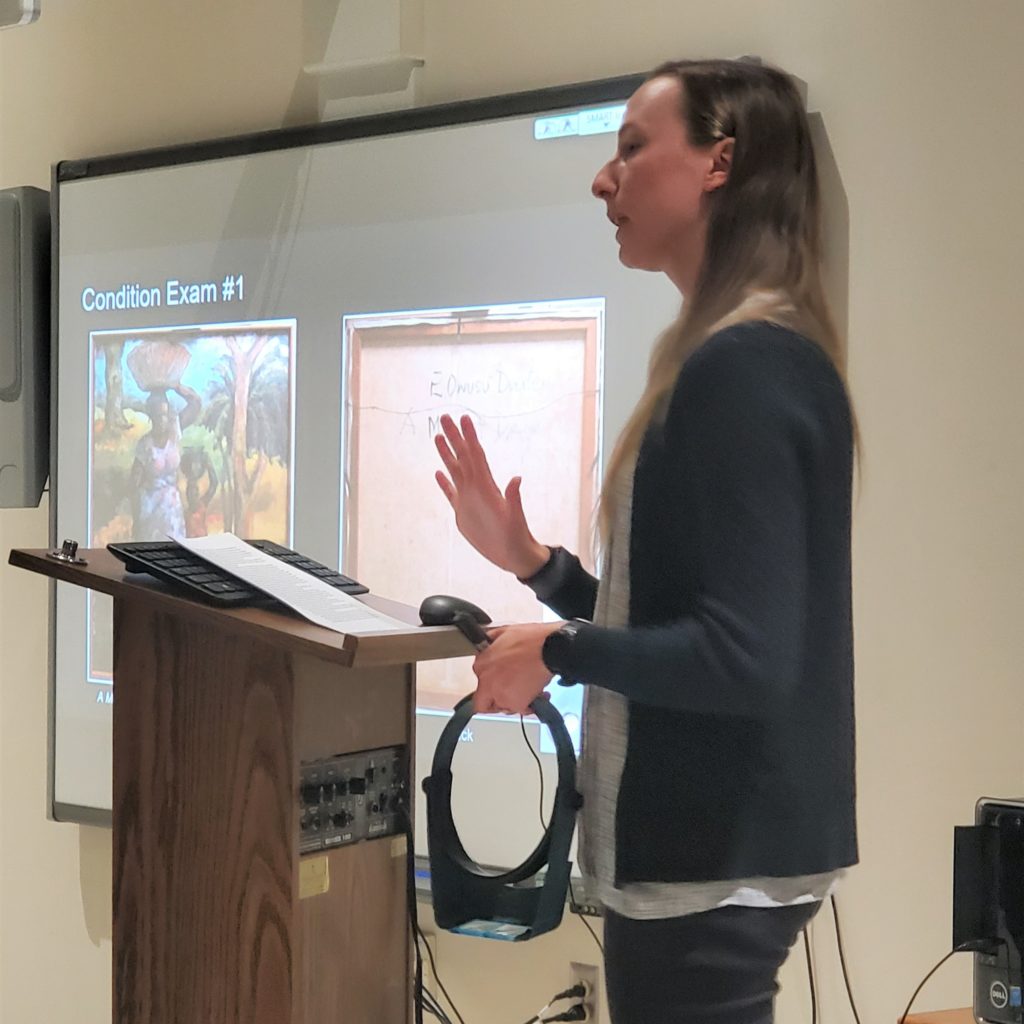
If you want to learn more about the different types of cracking that occur in paintings, and when and why conservators treat some but not others, read the post on Physical Forces and Inherent Vice!
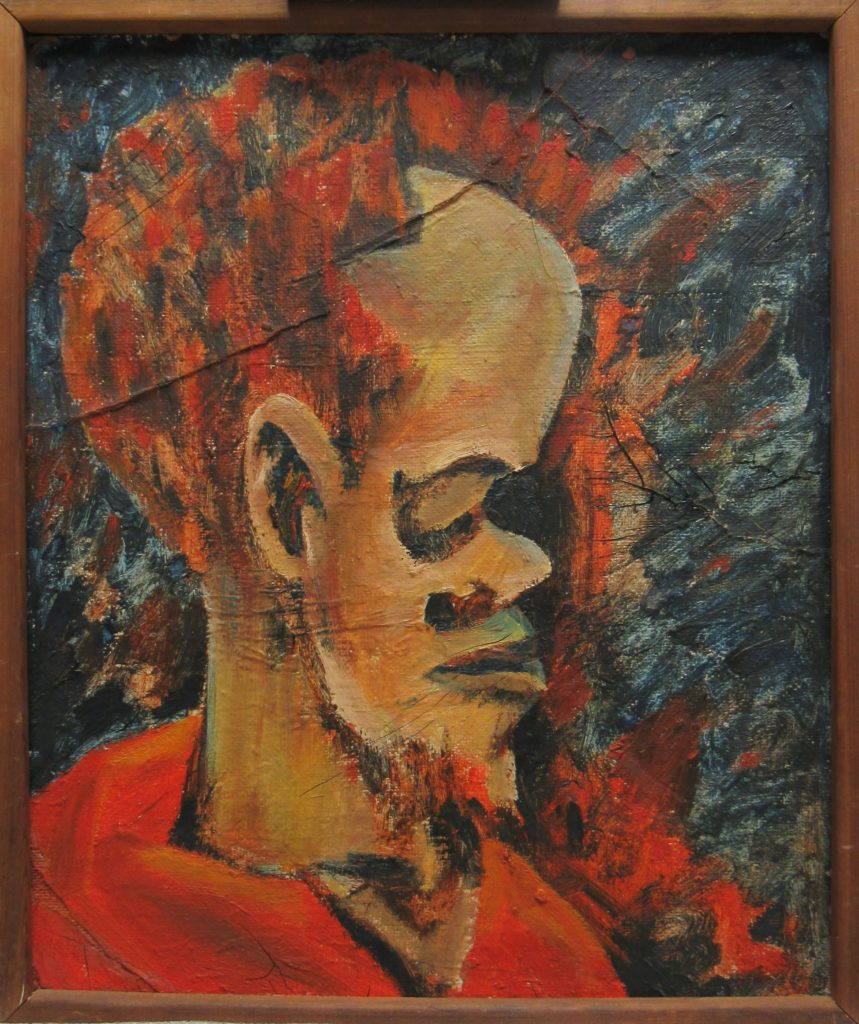
Tashae then covered some basics of the Harmon collection, and statistics about the art which had been examined so far. She then led an interactive art activity with the group using the paintings A Market Day by Emmanuel Owusu Dartey and Head of Christ by Elimo Njau. The activity involved first showing each painting to the group and giving them no further information about the piece. After asking what the participants felt and thought about the artwork, Tashae would give them more information, such as the title of the artwork, to determine if the participants’ initial feelings about the painting were reinforced or changed. The group had some very interesting observations to offer about A Market Day, including the apparent strength of the figures, and how the smaller person, probably a child, is copying the larger person, likely their mother. Many people identified with the scene personally, and related it to their own childhood experiences in Jamaica, Trinidad, and the Bahamas. For Elimo Njau’s Head of Christ (at left) the group brought up theories of the artist using certain colors to depict pain, and whether the closed eyes indicated contemplation, prayer, or someone tired from a heavy burden.
Finally, Kenlontae’s segment on museum careers showed that the field is broader than the “typical” jobs one might think of, such as education, curation, and conservation. He brought up aspects of exhibition design, social media marketing, and working with artists. He also showed examples of artists serving as curators, like Fred Wilson, which has led to some interesting exhibitions at other museums.
We really enjoyed presenting the information we have learned so far to this group, but mostly we enjoyed learning from them! The value of collaborative programs like this was clear, as it expanded how we viewed the two paintings, A Market Day and Head of Christ, even though we had been looking at them for months. We hope to lead similar discussions with other groups, including younger students, in order to obtain various perspectives beyond our own academic research. Gauging how the public reacts to artworks will help us to build successful exhibitions at the end of this project!
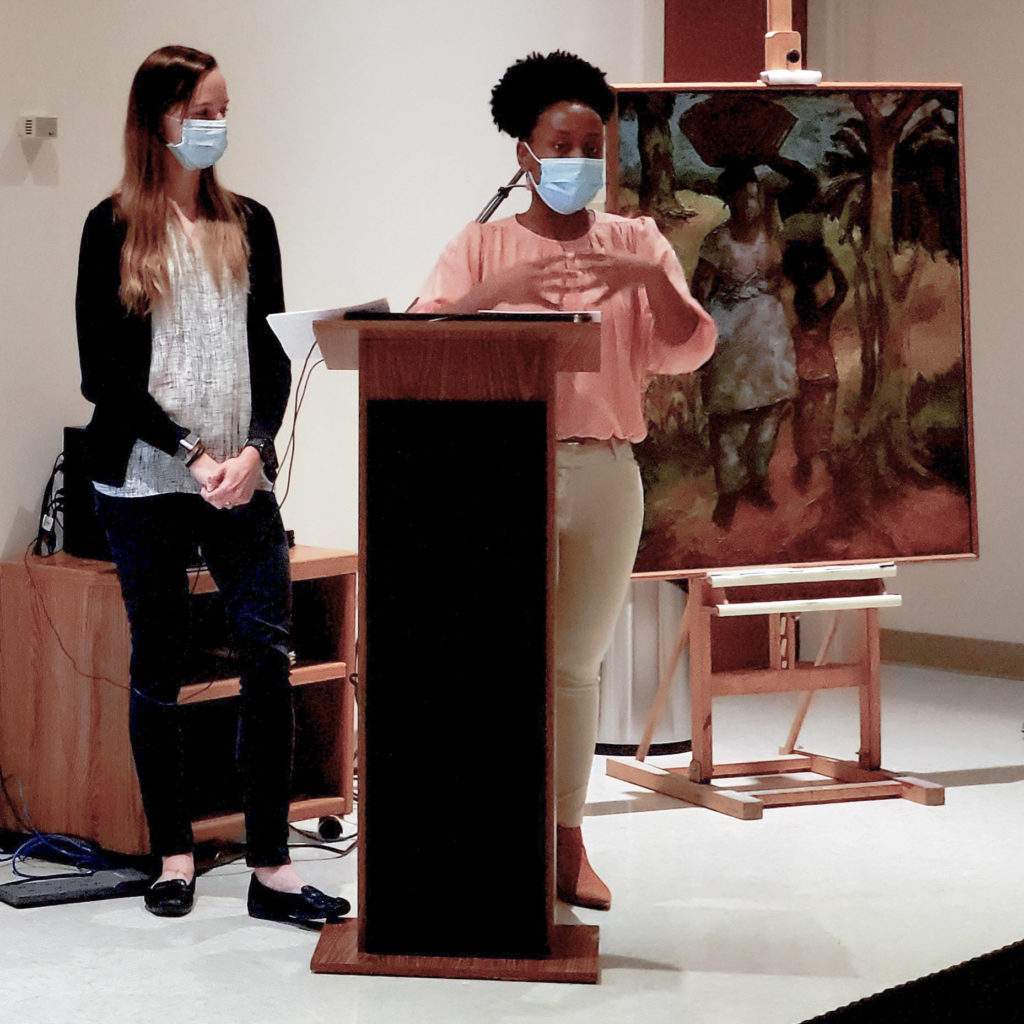
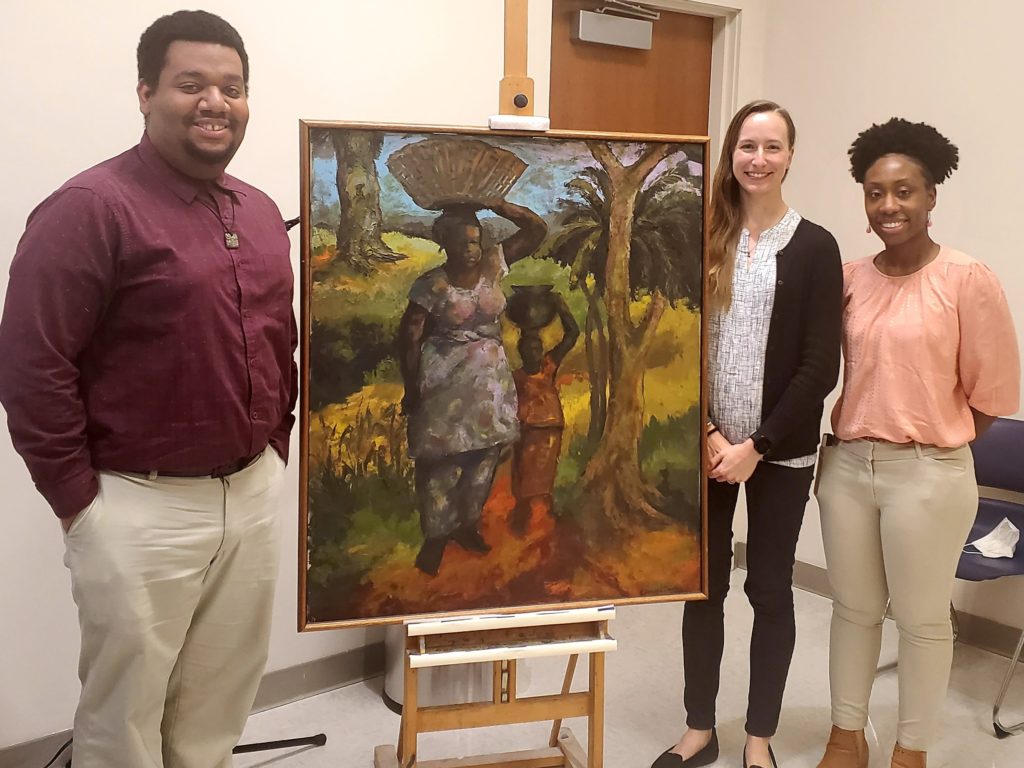
References
Houston, Kerr. How Mining the Museum Changed the Art World. Bmore Art, May 3, 2017.
McFadden, Robbyn (Producer). Art of history: Preserving African American dioramas. Edited by Mike Levine. CBS Sunday Morning, August 30, 2020.
Westermann, Mariët, Roger C. Schonfeld, and Liam Sweeney. 2015 Art Museum Staff Demographic Survey. The Andrew W. Mellon Foundation, July 28, 2015.
Westermann, Mariët, Roger C. Schonfeld, and Liam Sweeney. 2018 Art Museum Staff Demographic Survey. The Andrew W. Mellon Foundation, January 28, 2019.
Websites:
Explore other articles like this
The Andrew W. Mellon Fellowship: Now and Beyond
In this post, I will highlight some of the accomplishments of this project and address two main takeaways that can help those looking to reproduce a similar fellowship program.
Art Spotlight: The Abandoned Hut by Mordecai Buluma
In this blog post Angie and Tashae discuss the symbolism behind The Abandoned Hut by Mordecai Buluma as well as the conservation treatment used to prepare it for exhibition.
Opening of I am Copying Nobody the Art and Political Cartoons of Akinola Lasekan
On April 13, 2024, I Am Copying Nobody: The Art and Political Cartoons of Akinola Lasekan opened at the Chrysler Museum of Art. Here are some highlights from the exhibition.
